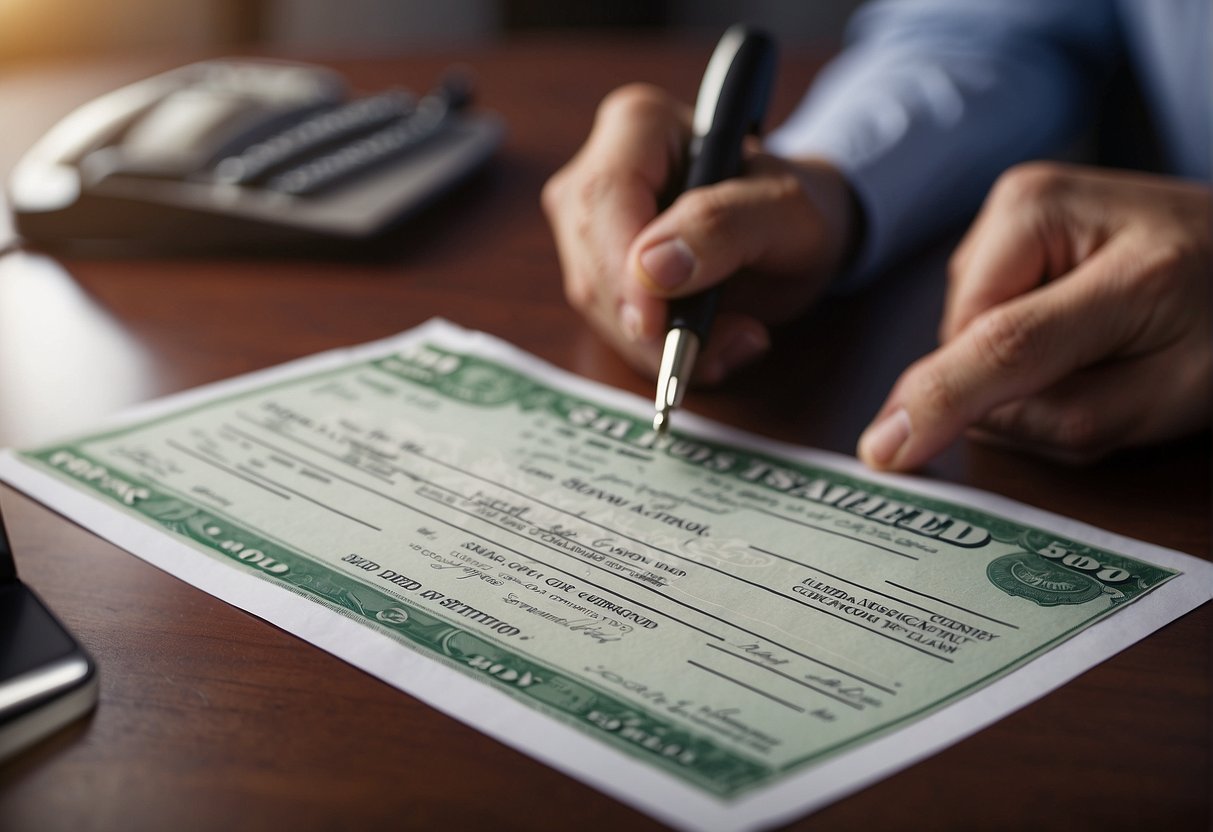Understanding Personal Injury Claims
Personal injury law is designed to protect individuals who have been harmed due to the negligence or wrongful conduct of others. In this section, we’ll dissect the legal framework and types of personal injury claims.

Definition of Personal Injury Law
Personal injury law, also known as tort law, pertains to legal disputes that arise when one individual suffers harm from an accident or injury, and another individual might be legally responsible for that harm. A key principle within this framework is negligence, where an individual’s failure to take proper care results in damage or harm to another. The injured party has the right to file a personal injury claim to seek compensation for their losses.
In personal injury cases, establishing liability is crucial. Liability means someone is legally responsible for the injuries sustained by the plaintiff. There are different legal obligations known as duty of care that individuals and entities must adhere to. In some circumstances, strict liability applies regardless of fault or negligence, often seen in cases involving defective products.
Types of Personal Injury Claims
Personal injury claims can take various forms. Here are the most common:
- Motor vehicle accidents: In such cases, the fault is typically determined by the rules of the road and the driver’s duty of care to avoid harm.
- Slip and fall accidents: Property owners may be held liable if they neglected the duty to ensure their premises were safe.
- Medical malpractice: Health care providers are expected to maintain a standard of practice, and failure to do so may lead to claims of negligence.
- Product liability: Manufacturers and distributors have a strict liability for harm resulting from defective products.
- Workplace accidents: Employers must provide a safe work environment and could be liable for workplace injuries resulting from negligence.
- Assault, battery and other intentional torts: These claims arise from actions taken with the intent to harm, differing from negligence-based claims.
Each type of claim involves unique legal considerations around duty of care, negligence, fault, and liability, shaping the legal strategy and potential outcomes.
The Legal Process of Personal Injury Claims
We understand the complexity of the legal process related to personal injury claims. It involves several critical steps starting from filing a claim to potentially reaching a settlement agreement. Let us guide you through these essential stages.
Filing a Claim
When we pursue a personal injury claim, the first step is to file a claim. Documentation is crucial; it encompasses the injury report, medical records, and evidence of any other losses. We need to provide this documentation to the insurance company or the court to establish the basis of our legal claim.
Role of Evidence in Building a Case
Evidence is the foundation of our case. It includes medical records, witness statements, and possibly expert testimonies. The quality and relevance of the evidence can significantly influence the outcome of our claim. We meticulously gather and present evidence to support our assertion of negligence or fault.
Statute of Limitations
Our claim must be filed within a certain timeframe, known as the statute of limitations. This period varies by jurisdiction but typically ranges from one to several years. We ensure to file the claim promptly to avoid forfeiting our right to pursue compensation.
Negotiation and Settlements
The majority of personal injury claims are resolved through out-of-court settlements. We engage in negotiations with the other party to reach an amicable settlement agreement. Both sides present their cases, and through negotiation, we aim to secure a fair compensation for the damages suffered.
Damages and Compensation
In personal injury claims, understanding the calculation and types of damages, as well as the role of insurance adjusters, is crucial for fair compensation.
Calculating Damages
We take into account all losses stemming from the injury when calculating damages. This calculation typically includes medical expenses, which cover hospital bills and ongoing treatment costs. We also consider lost wages, accounting for the income victims could not earn due to their injuries. Property damage, if any, is evaluated based on the cost of repair or replacement of the damaged property.
Economic vs Non-Economic Damages
Economic damages are quantifiable losses such as:
- Medical expenses: Hospital bills, medication, rehabilitation
- Lost wages: Income lost from being unable to work
- Property damage: Costs to repair or replace property
Non-economic damages are more subjective and include:
- Pain and suffering: Physical and emotional distress
- Loss of enjoyment of life: Detriments to quality of life
This distinction is pivotal for us to ensure a comprehensive claim.
Insurance Adjusters and Fair Compensation
Insurance adjusters from insurance companies play a key role in determining fair compensation. Their job is to assess the claim and decide the amount the insurance company should pay. It’s our responsibility to present all relevant evidence of damages to justify the compensation we seek. We must be prepared to negotiate with adjusters, who may attempt to minimize the insurer’s payout. Our goal is always to secure compensation that truly reflects the extent of your losses.
The Role of Legal Representation
In personal injury claims, securing competent legal representation is pivotal to navigating the complexities of the law and achieving a favorable outcome. We need to understand the importance of selecting the right attorney and their critical role throughout the legal process.
Choosing an Experienced Attorney
Selecting an experienced attorney is crucial in personal injury cases. An attorney’s expertise in this field ensures that all aspects of the case are handled with precision. During the initial consultation, we must confirm that the attorney has a successful track record in personal injury law.
Key Considerations for Selecting an Attorney:
- Specialization: Focus on attorneys specializing in personal injury law.
- Experience: Assess past case results to gauge experience level.
- Reputation: Look for testimonials or peer reviews.
Attorney’s Role in Personal Injury Cases
An attorney provides indispensable legal advice and representation throughout a personal injury case. From investigation to litigation, attorneys handle complex tasks to safeguard our interests.
Core Responsibilities of an Attorney:
- Case Assessment: Detailed evaluation of the claim’s validity.
- Evidence Gathering: Securing all relevant documentation and witness statements.
- Legal Strategy: Developing a robust argument tailored to the specifics of the case.
- Negotiation: Striving for the best possible settlement with insurance companies.
- Trial Representation: Advocating on our behalf if the case goes to court.
It is vital to work with a personal injury lawyer who not only possesses the required knowledge but also the dedication to represent our rights effectively.
Frequently Asked Questions
In this section, we address some commonly posed inquiries regarding personal injury claims, focusing on the proof required, limitations, emotional distress, valuation, defenses, and the impact of negligence.
What do you have to prove in a personal injury claim?
We must show that the defendant owed a duty of care, breached that duty, and the breach caused the injury which led to actual damages. This involves establishing negligence directly linked to the harm suffered.
What are the limitations on personal injury claims?
Personal injury claims are subject to statutes of limitations, which vary by jurisdiction. These laws restrict the time within which we can file a lawsuit, typically ranging from one to six years from the time of the injury.
Is emotional distress considered in personal injury cases?
Yes, emotional distress is often considered in personal injury cases. We must demonstrate that the distress is a direct result of the injury sustained, and it can be as significant as the physical injuries in proving damages.
How is the value of a personal injury claim determined?
The value of a personal injury claim is determined by the extent of the injuries, the impact on our client’s life, the economic losses incurred, and the non-economic damages such as pain and suffering. Documentation and expert testimony are key in valuation.
What are common defenses in personal injury lawsuits?
Common defenses in personal injury lawsuits include claiming that the plaintiff did not prove the defendant’s negligence, the defendant had no duty of care, the plaintiff contributed to their own injuries, or that an intervening cause was responsible for the injury.
How does negligence affect a personal injury claim?
Negligence affects a personal injury claim by defining the liable party. If we prove the defendant acted negligently, they are typically held responsible for the harm caused. However, if comparative or contributory negligence is applicable, our claim could be diminished or denied.




